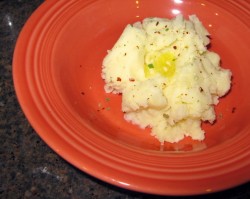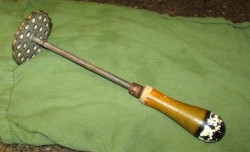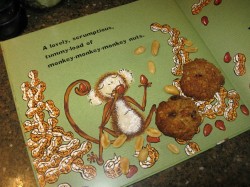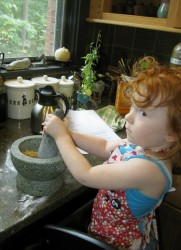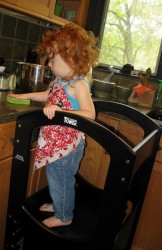Health Update
I just wanted to warn my regular readers that if my posting becomes slow or erratic over the next several weeks, it is because I am having some health problems that may require surgery.
For the past week, I have been having chronic sharp pains in the upper right quadrant of my abdomen and in the center of my back and under my right shoulder blade. Yesterday, I finally went to an urgent care facility because my regular GP couldn’t see me until this coming Monday, and the doctor is pretty certain that I have gallstones. I had several x-rays and some bloodwork to confirm the diagnosis at the hospital last night.
After I talk with the doctor on Monday, he is probably going to refer me to the surgeon, and we’ll go from there. I will probably be able to have the gallbladder removed through laproscopic surgery, which means tiny incisions and quicker healing. If there is a complication, then it is the old fashioned, big incision surgery for me and a long post-op healing period.
Not fun.
In the meantime, I am eating lots of whole grains, low fat dairy products, vegetables and fruits.
And soup.
And rice.
Thank God for rice!
Update to the update:
I went to my regular doctor this morning, and brought along the report from the x-rays and the blood work. The x-rays came back all normal; no gallstones showed up, no swellings in the organs, nothing out of the ordinary. Of course, both my regular doctor and the Express care doctor I saw on Friday (and whom I spoke with this morning) said that an ultrasound was called for, because the symptoms show a classic case of gallstones.
My blood work is fine–no raised white cell count, no signs of infection and the liver function is coming back normal. That is great news.
So, now I have an appointment for an ultrasound on the 9th of October and an appointment with the surgeon on the 11th.
In the meantime, on Wednesday, we are going to Baltimore so Kat and Zak’s Grandpa, who is in his nineties, can visit. He saw her when she was a few months old, but hasn’t since then, and we wanted to make certain he got to see her before heading back to Florida for the winter. We had already planned this trip when the gallbladder started to act up.
So, I will take care to eat low-fat food and just trust that all will be well.
Garlic Mashed Potatoes The Way That Mom Never Made Them
No one in my family ever made garlic mashed potatoes. No one had ever even heard of them until I started making them over a decade ago.
Mashed potatoes were simple things in my childhood: russet (or all purpose white) potatoes, peeled and cut into chunks, boiled until they were soft, then drained, then mashed with the following three ingredients: butter (or, alas, margarine), salt and milk (or evaporated milk.) That was it. No pepper even–pepper was to be added to taste at the table.
And the truth was, those mashed potatoes were plenty good. It isn’t like I turned my nose up at them or anything.
And there were slight variations on these. Gram would often prefer to use red-skinned boiling potatoes rather than russets or all-purpose potatoes. Because of the waxy structure of thier starch the red-skinned potatoes, when boiled and mashed, turned into a creamier, more dense end product that had a slightly sweeter flavor than the usual fluffy and slightly dry mashed russets. Gram also mashed her potatoes by hand with an implement that I proudly use to this day while Grandma used her Sunbeam stand mixer and my Mom used her hand mixer.
I liked the texture that the hand-mashed potatoes had better than the ones done with mixers; however Grandma’s made with Grandpa’s homegrown Irish Cobbler or Kennebec potatoes with margarine and evaporated milk had the most amazing fluffiness–they were light and airy and amazing, and tasted very strongly of earthy potato. But I liked Gram’s too, with the little lumps and their natural creaminess–and their amazing tastiness from all the real butter Gram used. (When Gram’s mashed potatoes were perfectly smooth like Mom’s or Grandma’s we knew she had cheated and opened a box of potato buds.)
See, potatoes were a big deal in my family, and none more so than mashed potatoes. Fried potatoes, boiled potatoes with butter or with butter and dried parsley, or baked or scalloped or served au gratin, or made into delicious potato salad (my Mom was the Potato Salad Princess of our family–everybody loved hers best, and they still ask her to make it after all these years) all of these were good, but mashed potatoes were the queen of the dining room table. Everybody loved them.
I would say that we ate mashed potatoes at least twice a week, sometimes three times a week. We certainly ate potatoes in some form every day–it has to do with growing up poor, I suspect. Both my Mom and Dad grew up “on limited budgets” (let’s be real, they “was po'” as they say in Charleston), and both sets of grandparents had lived through the Depression and World War II, so to all of them, potatoes were a necessity. Our house never had fewer than twenty pounds of potatoes in the ‘tater bin, and Grandma and Grandpa–geez, they grew hundreds of pounds of them and had a special root cellar where they kept them all in the cool dark through the long winter months. (I loved the smell of the root cellar–all earthy and good, with a tinge of sweetness from the bins of apples and a tang from the kraut crock.)
So potatoes–it was all about potatoes, especially mashed.
Which is not to say that every dish of mashed potatoes brought to the table in my childhood was fantastic. Most of them were, true, but now and again, strange things would happen to the potatoes and the cook would be mystified and distressed. Sometimes, Mom would miss a bit of potato and there would be sizable lumps in her usually fluffy russets. Or, worse, now and again, Grandma’s potatoes were turn out runny, even if she put the same amount of evaporated milk as usual in them–they would, instead of standing up in proud peaks and swirls, go plop on the plate in a sad ploopy pool of pathetic potato.
Or the worst–sometimes Mom’s potatoes would turn inexplicably gluey and sticky–the texture would go all unpalatable and icky, and on those days they would have to be drowned in gravy just so I could get them down, because the texture would make my stomach go all squiffy and jello-like.
It turns out that the reasons behind these mashed potato misfires are simple and have to do with the structure of the potato starch or their native moisture content or the fact that sometimes quickly draining boiled potatoes and then sort of shaking them in their colander for a few seconds is not enough to remove sufficient water from them in order to get properly fluffy mashed potatoes.
The gluey mashed potatoes come about if you overbeat or overwhip boiled russets. The dry starch will go all sticky and gluey and wallpaper-pasty and really no one wants that. The solution is to very carefully not over beat them, especially if you are using a mechanical mixer. (And it is really easy to overbeat them if you don’t pay attention as you go along. My Mom, when she was distracted, would not watch the potatoes as they whipped and within seconds, they would go from light and fluffy and delightful to ick. And she never figured out why. (When I found out why this happened from reading one of Julia Child’s cookbooks, I told her, and since then, she has had very little trouble with wallpaper paste potatoes.)
I have found that if you mash your potatoes by hand, you run a much lower risk of having the starch go awry. In general, I figure your arm will get tired long before the glue gets working.
Grandma’s runny potatoes came from not drying the potatoes thoroughly enough. When she would let them sit in the colander for a few minutes, they would usually dry out enough, but especially if the potatoes were young and had plenty of inherent moistness to them, even that wasn’t enough. I learned from a Julia Child episode years later how to avoid that–pop the drained potatoes back in the pot, set them back on the stove and stir those suckers around until you get a little hazy film of potato starch on the bottom of the pot. That was the sign that your potatoes were sufficiently dried out for successful mashing.
So, now that I have given you a treatise on potatoes and a bit of cultural history as to the Fisher/Perks families’ dietary habits in regards to the beloved spuds, let us get down to business and make some delicious garlic mashed potatoes.
My method is simple, and results in the most delicately flavored and perfumed garlic mashed potatoes you can imagine. I don’t use roasted garlic, and I don’t saute it or even simmer it in butter as some folks do. I simply put peeled garlic cloves into the pot with the potatoes and boil them together and when the potatoes are done, I mash the garlic in with them.
That is it.
And they are the best garlic mashed potatoes ever. Folks like my garlic mashed potatoes better than Julia Child’s version, where she simmers the garlic in butter and then mashes them in and uses the butter in the potatoes. Her way lacked flavor, but that isn’t surprising. Julia didn’t love garlic as much as I do.
I use butter when I mash my potatoes, of course, and cream. Milk is good, too, but I like butter and cream best. For non-garlic mashed potatoes, I use butter and sour cream or butter and Greek yogurt instead of the butter and cream. And when I really want to go freakishly rich on everyone, I have been known to mash potatoes with a bit of butter, a bit of cream and a good bit of Brie cheese (with the rind cut off, obviously.) The Brie potatoes get fresh thyme leaves and fresh minced rosemary leaves stirred into them right before serving, and they are wickedly delicious.
Oh, and one more thing you should know about mashed potatoes.
If you have a pressure cooker, you can go from peeled and cut up potatoes to boiled in about three minutes. (Put the potatoes in the pressure cooker, with enough water to barely cover them, bring to a boil, lock the lid, bring to full pressure, cook for three minutes, then quick release pressure.) Then, you drain them, dry them and mash them–that takes about five minutes, which means you can have real, honest to God mashed potatoes in about eight minutes flat. (I timed myself doing it once.) That is slow food done fast–bite that, potato buds!
Garlic Mashed Potatoes
Ingredients:
5 pounds russet potatoes, peeled and cut into 1/2″ thick chunks
1 head garlic, cloves peeled, but left whole
4 tablespoons butter
1/4-1/3 cup heavy cream
salt and freshly ground black pepper to taste
Aleppo pepper and freshly snipped chives for garnish
Method:
Put the potatoes and garlic in a pot and cover with cold water. Bring to a boil and turn heat down to a merry simmer, and cook until the potatoes are fork tender. (Which means a fork goes into them and then comes easily back out again–no sticking.) Or taste a potato chunk to see if it is properly done. They should be something that you could melt some butter over and eat without mashing–underdone potatoes make awful mashed potatoes. Simply awful. Don’t go there.
Drain your potatoes–allow them to sit in the colander for at least two minutes, shaking them now and again. While the potatoes are draining melt the butter and cream in the microwave until they are melty and warm. Then, pop the potatoes back in the pot, and stir them over medium heat until a film of potato starch forms on the bottom of the pot.
Remove from the heat, and mash by hand. (Come on, you can do it. Get yourself a potato masher and have at it. I do it all the time. I even mashed 20 pounds of potatoes by hand using Gram’s masher in a huge pot for the Toyota Farm to Table event. If I did that, you can do five pounds for real. Besides, it builds up great forearm muscles.) When potatoes are pretty well halfway to mashed, pour in the melted butter and cream, and mash until most of the lumps are gone. Then, using the masher, beat the potatoes a bit, going in big circles around the pot. Sprinkle in the salt and pepper and beat them a little bit more. At this point, they should be fluffy and delicious.
Garnish with Aleppo pepper flakes and snipped bits of fresh chive, and if you must, a bit more melted butter. You know, just to make it pretty.
Fruity Monkey Nut Cookies
I know what you are thinking, and you have a dirty mind.
I will have you know that in this house, monkey nuts are not what you think they are, they are peanuts.
And it is all Cathy MacLennan’s fault.
She is the author of two of Kat’s favorite picture books, Monkey, Monkey, Monkey and Chicky Chicky Chook Chook. In her book, Monkey, Monkey, Monkey, a little baby monkey gets hungry and goes in search of his favorite food–monkey nuts. And it turns out monkey nuts are peanuts, but monkey nuts is more fun to say, and it fits the rhyme and rhythm of the story better, so monkey nuts they are.
The books are really fun to read–the stories are cute with great flowing, bouncing sing-songish rhythms and the illustrations are dynamic and full of movement and color. It is no wonder Kat likes them–and luckily, so do the rest of us. (I think that Zak just likes an excuse to say monkey nuts over and over, but that is just me. The fact that he reads it in the Beavis voice sometimes leads me to this conclusion.)
So now you know why we call peanuts monkey nuts at our house.
Which also explains the name of these cookies–they have peanuts, I mean, monkey nuts in them.
I actually came up with them as something for Kat and I to make together and as a vehicle to get her to eat more different dried fruits, more peanuts, I mean monkey nuts, and oats. I used white whole wheat flour for these cookies and ended up putting dried sour cherries, golden raisins and dried cranberries in the dough along with the peanuts.
I could have used half butter and half peanut butter in the dough, but I was running low on peanut butter so I didn’t bother with it. But next time I make them, that is what I will do.
What were the results of my cookie baking experiment with Kat?
Well, she loved helping to bake the cookies. She helped measure spices, fruits, oats, nuts and salt, and dumped stuff into the mixer bowl and helped crush up the peanuts a little bit with the mortar and pestle. Then she helped scoop cookie dough onto the baking sheets. We knew that she already loved dried cherries, but we discovered that she also likes golden raisins and dried cranberries. And she liked the resulting cookies as well, so I am pleased with the outcome.
So, Fruity Monkey Nut Cookies were a success which shall be repeated in the future.
Now, Kat is already excited about making a batch of cookies to take to Great Grandpa before we go visit him in Baltimore later this month!
I love teaching kids about food and cooking!
Fruity Monkey Nut Cookies
Ingredients:
1 cup white whole wheat flour
3/4 teaspoon baking soda
1/2 teaspoon salt
3/4 teaspoon cinnamon
1/4 teaspoon allspice
1/8 teaspoon cardamom
1 cup butter (or 1/2 cup butter and 1/2 cup peanut butter)
3/4 cup raw sugar
1 tablespoon plus 1 teaspoon honey
1/2 teaspoon vanilla extract
2 eggs
2 cups rolled oats
1/2 cup golden raisins
1/2 cup dried cherries
1/2 cup dried cranberries
3/4 cup lightly crushed roasted unsalted peanuts
Method:
Preheat oven to 375 degrees F.
Line cookie sheets with silapats or parchment paper. Mix together flour, salt, baking soda and ground spices.
With an electric mixer, cream together butter (and peanut butter, if you are using it) and sugar until it is fluffy. Add honey and vanilla extract and beat until creamy. Add eggs and beat until well combined.
Add flour to bowl and, scraping down sides as necessary, mix it thoroughly in with butter mixture.
Add the oats, fruits and nuts, and combine on low speed, scraping down bowl and beater as necessary.
Drop by rounded tablespoonsful on cookie sheets about two inches apart and bake in a convection oven for nine minute, or until lightly browned. (For a regular oven, bake for twelve minutes.)
Allow to cool on the sheet for about a minute before removing cookies to a wire rack to finish cooling.
Note: Other healthy additions you could make to these cookies–chopped up dried apples, flax seeds or flax seed meal, roasted unsalted sunflower seeds, or you could use soy nuts and soy nut butter instead of the peanuts, I mean, monkey nuts.
A Tool To Make Cooking With Kids Easier And Safer: The Learning Tower
By now, most folks who read this blog know how strongly I feel about cooking and eating with our kids. And, for those who pay attention to the news, there have been reports several times a year for the past five years or so on research that has shown, over and over again, that family mealtimes are extremely beneficial to kids. Studies have shown a myriad of benefits to kids who eat at least one meal a day with their families: they study better, do better in school, are less apt to use drugs, drink or smoke cigarettes, have better relationships with their families, communicate better with their families and with everyone else, and they tend to eat better, more healthy foods.
Cooking with kids from an early age is also beneficial. Kids can learn physical coordination, math skills, how to follow sequential instructions, fine motor skills, physics, chemistry and biology, not to mention nutrition, history and culture, all by simply helping Mom or Dad cook dinner. Not to mention kids also learn a useful life skill–how to cook–which will stay with them and serve them well for their entire lifetimes. And need I say that a kid who grows up helping to cook is more likely to go on in life to cook for themselves, perhaps leading to a healthier lifestyle?
So, as I did with Morganna from the age of about three on, I have been doing with Kat from the age of about two upward–I have been taking her into the kitchen and cooking with her.
But while Morganna would happily stand on a kitchen chair so she could be up at the counter with me to stir batters, pick leaves off of herbs or beat eggs with a whisk, Kat is too timid. She got scared standing on chairs, because, well, frankly, our chairs are a little wobbly and just don’t feel stable enough to her. She would panic and think she was going to fall and scream to be put back on the floor.
So, unhappily, I confined her help in the kitchen to stuff I could do on the floor with her, though it never made me pleased. The floor is just not the best place to go about cooking–it is hardly sanitary.
I was thrilled to find this product–The Learning Tower–which solves the problem Kat was having with feeling unsafe standing up on a wobbly chair.
This really neat, sturdy, all-wood-construction piece of furniture is a uniquely designed step stool that completely encloses the kid so they feel secure. Not only do the -feel- secure, they are in fact secure, because the tower is very difficult to tip–I am sure it can be done, but I am pretty sure a kid can’t do it. It is made so kids can climb into it themselves, or be lifted in by a parent, and having fiddled with it, I can say with confidence that it is very, very stable. The platform that Kat stands on is adjustable in height so you can use it for short kids and tall kids, and it will grow along with your child. It is also easily put together (this is a big plus–I hate putting stuff together if the directions are badly written and there are lots of weird pieces–this thing was so easy I understood it) and it looks nice in the kitchen. We got ours in a black finish but you can also get it in various wood stains, or other colors of paint. (The black just looked really nice in our kitchen as you can see.)
There are only two drawbacks to The Learning Tower. The big one is its price–which is considerable, though I suspect that is because it is made of hardwood with high quality construction standards and has a satin-smooth finish with no rough spots. It is a quality piece of furniture which will last for years. The second drawback is its size–it takes up a pretty big chunk of kitchen real estate, but, that I think is part of why it is so sturdy and stable.
All in all, I am pleased with it and I have to say that Kat loves it, and we use it at least two times a day.
She helps us make scrambled eggs every day, and she has helped make dinner almost every night since her grandparents sent it to us for her birthday. She helped me mash potatoes by hand the other day and then lo and behold–ate them! She had always refused to try mashed potatoes until she actually helped make them.
On her birthday, we used it to make her cupcakes and today we baked cookies with it. (Look for a recipe for the cookies tomorrow.)
It is a great invention, one that I suspect a handy-man or woman could replicate with a good set of tools and some ingenuity.
I wish I had one when I was a kid–the step stools I stood one were pretty rickety and always made me wary when I helped out in the kitchen!
Book Review: The Hungry Gene
I have been reading The Hungry Gene: The Inside Story of the Obesity Industry by Ellen Ruppel Shell for the past three days, and found it to be utterly fascinating. This book tells the story of how scientists are tracking down the genetic and biochemical causes of the current world-wide obesity epidemic, and it reads like a detective novel.
Well, it reads like a detective novel filled with geneticists, biochemists and endocrinologists, folks who seldom appear as characters in your standard mystery story.
But it is a mystery story, one which is partially unraveled in the course of the book, but which has, as yet, no real ending. it seems that every time scientists think they have found the gene, hormone or neurotransmitter that is the root cause of obesity, it turns out that they are only partially correct. The biological processes which controls appetite, hunger, satiety and fat storage are immensely complex, and attempts to control these processes by pharmaceutical means have all failed. I believe that this is in large part because our bodies are programmed to get fat in times of plenty, which is what we have been living in for the past several generations in the US. This programming is meant to protect humans from the stresses of an eventual famine, but since we have lacked one of those for more generations than I can count back, our evolutionary programming has led us into a serious health problem.
This makes the book sound like it is unremittingly depressing, and for some folks, I suppose it would be. But as for me–I found the narrative to be so fascinating that I could overlook the fact that much of the book is pointing out how seemingly inevitable it is that humanity will just continue to get fatter and fatter over the next twenty years, Genetics and biochemical bodily processes fascinate me, so I can get absorbed in the relatively few success stories in the book, and let the positive feelings they generate help me get past the depressing news contained in the rest of the narrative.
On the other hand–I have to say that it is somewhat comforting to me to know that some of my assumptions that body weight is in large part controlled by genetics. I have family members who have suffered and struggled with their weight over years, and not surprisingly, they are all directly related to one very obese individual–they are here children and grandchildren. Growing up seeing these kids start out at normal sizes and weights, then over time, in adulthood, gaining more and more weight, I always assumed that it was a familial trait. Especially since most of them didn’t eat that much more than the rest of us did, and some of them ate less.
All in all, it was a really interesting read, and is well worth the effort and time it takes for a layperson to get through all of the biomedical jargon.
Powered by WordPress. Graphics by Zak Kramer.
Design update by Daniel Trout.
Entries and comments feeds.

